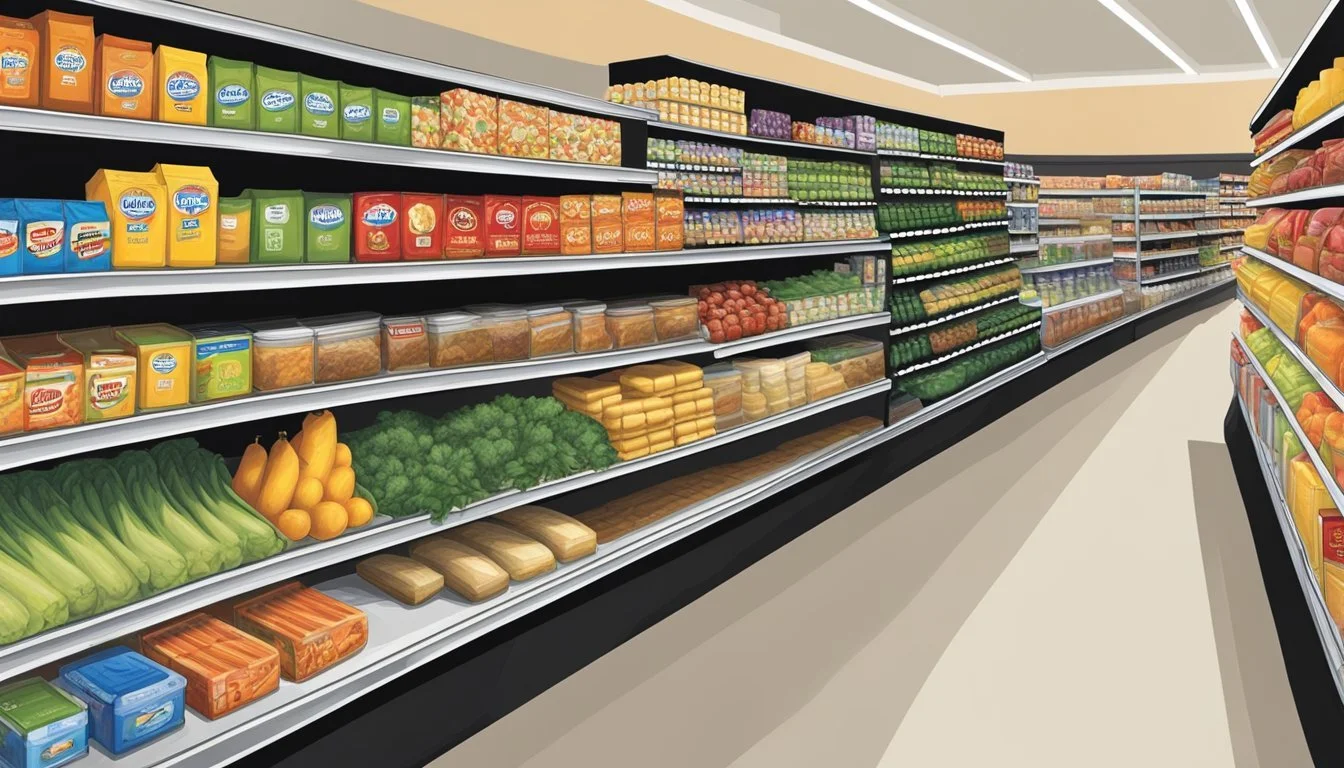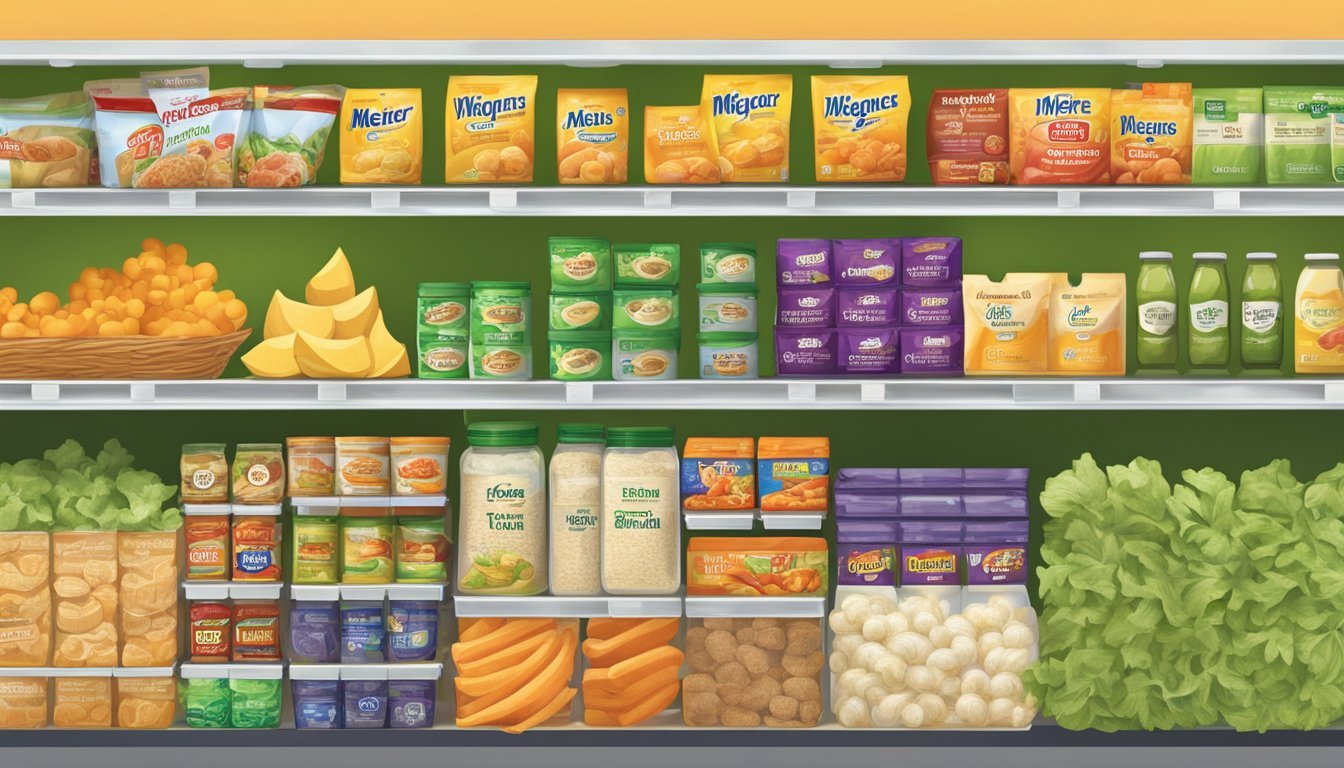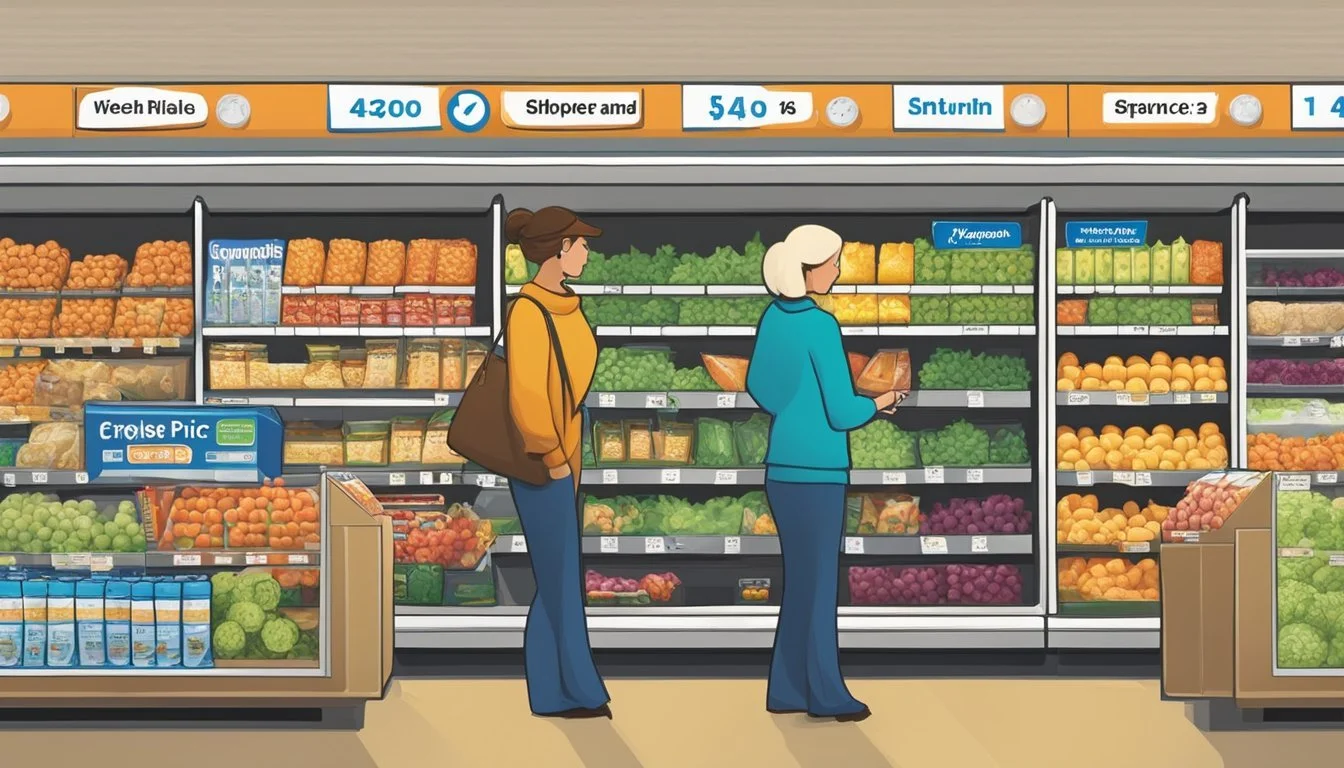Is Meijer Cheaper Than Wegmans?
Comparing Grocery Pricing Strategies
Part of Our Grocery Store Guide with Details on Meijer Prices and Wegmans Prices
When it comes to grocery shopping, customers are often on the lookout for the best value for their money. The debate between which supermarket provides the most cost-effective shopping experience brings us to compare Meijer and Wegmans. These two chains have built a reputation for their wide range of products and customer service, but their pricing strategies often come under scrutiny as shoppers strive to save on their grocery bills.
Meijer, a large chain with stores primarily located in the Midwest, offers its own store brand products, which are praised for providing a cost-saving alternative to national brands without compromising on quality. The store appeals to budget-conscious consumers by maintaining competitive prices across various categories. Wegmans, although it operates fewer stores compared to Meijer, is known for a similar approach, offering its line of products at lower price points than national brands and often saving shoppers a noticeable percentage on their purchases.
The choice between Meijer and Wegmans may boil down to more than just the price tag. While both aim to offer value to their customers, factors such as location, product diversity, and shopping experience also play significant roles. The comparison, though multifaceted, continues to be shaped by the consistent effort of both stores to balance cost-efficiency with quality offerings.
Comparative Overview
In evaluating whether Meijer or Wegmans offers cheaper prices, it's essential to consider both companies' profiles and their geographical market presence.
Grocery Chain Profiles
Meijer is a supermarket chain that operates in the Midwest. It's known for a vast selection of goods ranging from groceries to electronics. They have a reputation for offering affordable prices, particularly through their own store brand, which provides a cheaper alternative to national brands.
Wegmans, with a strong presence in New York and other states, also offers a variety of goods including groceries and household items. It has its own line of products which it markets at lower price points compared to national brands, potentially offering customers significant savings.
Market Presence and Locations
Meijer's geographic presence is primarily in the Midwest region of the United States, which includes states such as Michigan, Ohio, Indiana, Illinois, and Kentucky.
Wegmans, on the other hand, has a considerable market presence in the Northeast, with a significant concentration of stores in New York.
The locations of these supermarkets play a pivotal role in pricing strategies, influenced by factors such as local competition, operation costs, and consumer purchasing power in these regions.
Price Analysis
In evaluating Meijer and Wegmans, price is a key factor for consumers. Specifically, this analysis will focus on general pricing trends and a price comparison on regularly purchased items across both grocery chains.
General Price Trends
Meijer and Wegmans both offer store brand products that present a cost-effective alternative to national brands. Meijer's store brand is recognized for its balance of affordability and quality. Similarly, Wegmans offers its own range of products often marked at lower price points than national brands, with potential savings of up to 20%.
Price Comparison of Common Items
A more granular look at prices involves comparing specific common items across both stores. While specific data on item-by-item comparison between Meijer and Wegmans are not provided in the search results quotes, generically, discount retailers like Meijer are known for low prices, often 12 to 30 percent below average market prices. Store policies, regional pricing, and sale prices can further affect the cost of common grocery items, so consumers may experience variable savings.
Product Assortment
When comparing Meijer and Wegmans, shoppers will find distinct differences in the variety and quality of produce, as well as in the range of meats and deli offerings. These retailers cater to different consumer needs.
Variety and Quality of Produce
Meijer offers a broad selection of produce, including both conventional and organic options. Customers generally regard Meijer's produce as high-quality, matching up with consumer expectations for a large supermarket chain. Wegmans, on the other hand, is known for its emphasis on quality and often features a more extensive variety of high-quality produce.
Meijer: Broad range, including organic produce.
Wegmans: Focus on high-quality, extensive variety of produce, including organic options.
Range of Meats and Deli
The meat and deli sections at both stores present a diverse assortment that caters to a range of tastes and preferences. Meijer's selection of meats and deli products meets the standard for quality and variety expected at large grocery stores. Wegmans takes pride in offering a specially curated range of meats, including options for the discerning consumer who prioritizes both quality and specialty items.
Meijer: Standard quality, diverse selection.
Wegmans: High-quality meats and deli, specialty items available.
Store Brands versus National Brands
When considering the value provided by store brands and national brands, consumers often look at the balance between cost and quality. This section evaluates Meijer and Wegmans store brands against their national brand counterparts, focusing specifically on the quality and price of generic staples.
Evaluation of Store Brands
Meijer and Wegmans both offer their own store brands which are generally recognized for their value proposition—cost savings without a steep drop in product quality. Meijer's store brand, for instance, is frequently acknowledged for providing an affordable alternative to national brands, maintaining a satisfactory level of quality. Likewise, Wegmans' store label products are known to offer significant savings compared to national brands, facilitating a cost-effective shopping experience for the customers.
Price: Store brands like those of Meijer and Wegmans typically come at a lower price point.
Quality: The store brands are well-received, with customers often finding the quality comparable to national brands.
Comparison with National Brands
National brands are often positioned as premium products in comparison with store brands. They hold a reputation for consistent quality, which can justify their higher prices. Consumers, however, are increasingly finding the gap in quality between store brands and national brands to be minimal, a sentiment supported by survey findings where a vast majority perceive store brands to be on par with national brands.
Cost Efficiency: Store brands can offer up to 40% savings over national brands, making them an economical choice for everyday generic staples.
Perception: A majority of consumers rate the store brands as equivalent to national brands concerning quality.
Promotions and Savings
When it comes to finding value at the grocery store, shoppers often look to promotions and savings opportunities. Both Meijer and Wegmans offer various discounts and digital coupon options that can lead to significant savings on purchases.
Discounts and Sales
Meijer frequently runs sales on a variety of products, including seasonal promotions around holidays like Valentine’s Day. Customers can find weekly ads that highlight current discounts, potentially reducing their spend on regular shopping trips. Wegmans similarly provides savings through their sales flyers, offering competitive pricing that is often within a few percentage points of Meijer's.
Meijer:
Weekly Ads: Sales on seasonal items, weekly deals across different departments.
Holiday Specials: Notable discounts during holiday seasons.
Wegmans:
Sales Flyers: Regular publications spotlighting current discounts.
Competitive Prices: Often closely matches or competes with Meijer's offerings.
Digital Coupons and Memberships
Both stores cater to the digital-savvy shopper through their offerings of digital coupons and memberships. Meijer offers MPerks, a rewards program allowing customers to clip digital coupons, earn rewards, and receive personalized savings. Wegmans also has a digital coupon program that can be accessed via their mobile app, providing instant savings at checkout.
Meijer MPerks:
Digital Coupons: Accessible through the MPerks app with personalized offers.
Rewards: Earning system for additional savings on future purchases.
Wegmans:
Digital Coupon Access: Through Wegmans' mobile app, adding convenience to the savings process.
Membership Benefits: Although not a prime member system, customers can still enjoy tailored deals.
Customer Experience and Services
When considering the customer experience between Meijer and Wegmans, it is crucial to focus on the shopping atmosphere and the variety of grocery delivery options available, as these are significant factors shoppers evaluate for a convenient and pleasant shopping experience.
Shopping Atmosphere
Wegmans is known for its commitment to creating a positive shopping atmosphere; the layout of the stores is designed to offer a stress-free shopping experience. Customers report a sense of ease navigating the stores due to clear signage and a logical organization of products. Meijer, on the other hand, also ensures a customer-centric layout and offers services designed to make the shopping experience efficient and user-friendly, which includes well-trained employees who can adeptly assist shoppers with product locations and information.
Grocery Delivery Options
In terms of grocery delivery options, both Meijer and Wegmans have invested in services to increase convenience for their customers. Meijer offers a partnership with third-party providers to ensure that grocery delivery is accessible to a wide range of customers looking for time-saving solutions. Similarly, Wegmans provides online shopping and delivery services, recognizing the growing demand for such convenience. These services highlight a responsive adaptation to consumer needs for saving time and simplifying the shopping process.
Both stores understand the importance of convenience and have adapted to include delivery as a vital component of their service offerings.
Consumer Research and Reports
In the evaluation of grocery store pricing, consumer research plays a pivotal role. Reports and feedback gathered from various sources, including Consumerpedia studies, inform shoppers about the cost-effectiveness of different retail chains.
Ratings and Feedback
Consumer reports indicate that Wegmans has consistently maintained a high ranking for overall quality among East Coast stores. This aligns with survey responses from a significant number of subscribers who vouched for Wegmans' top spot in customer satisfaction. In contrast, Meijer has been recognized for its store brand that balances affordability with quality, potentially offering a better value option to those prioritizing their budget.
Consumer Satisfaction: Wegmans tops in surveys
Affordability: Meijer offers competitive store-brand pricing
Consumerpedia Findings
Consumerpedia—recognized for its thorough market analysis—conducted research that delved into the pricing strategies of major grocery stores. The findings suggest that consumers lean towards stores such as Meijer for lower-priced alternatives to national brands. In some cases, individuals reported saving up to 20% on their grocery bills when opting for store brands at retailers like Wegmans and Meijer.
Market Analysis: Consumerpedia research indicates savings at Meijer
Podcast Discussions: Consumerpedia podcast often evaluates grocery prices, reiterating the cost advantage of certain store brands
The insights from surveys and consumer feedback are invaluable for shoppers looking to reconcile quality with affordability.
Analysis of Budget Influence
When comparing Meijer and Wegmans, budget impact is a critical aspect for many shoppers. Families looking to maximize savings on groceries often take into account the balance between cost and value.
Shopping on a Budget
For families operating under a strict budget—potentially a common $250 per week for groceries—identifying the store with the cheapest prices is paramount. At Meijer, a shopper may find store brand items that offer significant savings over national brands without compromising on quality. In a price comparison scenario, this could mean more items in the cart for the same budget. Wegmans, while offering a premium shopping experience, also provides its own brand alternatives that can help shoppers save up to 20% on their grocery bills, thereby impacting a family's weekly budget allocation favorably.
Value for Money
Value for Money is not just about the lowest price tag; it's also about the quality and variety received. Wegmans has a reputation for high-quality produce and a wide selection of organic options, which contribute to customer loyalty despite the potential of slightly higher prices. In a direct price comparison, stores like Aldi are often the winners for the cheapest overall prices, but Wegmans competes by offering value through quality and selection. It is crucial for shoppers to consider both Aldi and Wegmans when seeking a balance between their budget constraints and their desire for a wider variety of food choices, including fresh and organic options.
Comparison to Other Retailers
In comparing Meijer to other retailers, it becomes evident that factors like pricing, store branding, and regional prevalence play crucial roles in determining where consumers can get the most value for their grocery dollars. Below are comparisons with some key retailers in the grocery segment.
Walmart and Target
Walmart is renowned for offering competitive prices on a vast array of products, often being the baseline for affordability. Analysis of shopping baskets indicates that Walmart provides exceptional value, particularly when it comes to essential grocery items. In contrast, Target markets itself more on brand selection and shopping experience, albeit at a slightly higher price point than Walmart.
Example Pricing Comparison:
Walmart: $119.44 for a standard basket of grocery items
Target: Typically slight price increase in comparison to Walmart’s baseline
Whole Foods and Trader Joe’s
Whole Foods holds a position as a premium grocery retailer, focusing on organic and high-quality products. Their prices are generally higher, reflecting the premium branding and product selection. Trader Joe's, on the other hand, adopts a unique approach by primarily offering private labels and keeping operational costs low. This enables them to offer lower prices for many items compared to Whole Foods, while still maintaining a focus on quality.
Product Types:
Whole Foods: Organic, high-quality products at premium prices
Trader Joe’s: Private label items that emphasize value while maintaining quality standards
It should be noted that Aldi, similar to Trader Joe's, also competes aggressively on price due to their private labeling strategy and cost-saving measures that ultimately benefit budget-conscious shoppers. Meanwhile, regional chains like Woodman’s and Hy-Vee also offer their own pricing strategies that may provide value depending on the locality and product range they offer.
Price Strategy Overview:
Aldi, Woodman’s, Hy-Vee: Strategies involve a combination of private labeling, regional focus, and cost structures aimed at providing value to the customer.








